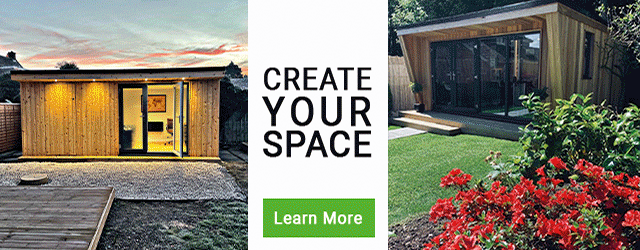Paying for a garden room
A garden room is a significant investment, and many readers ask us how people pay for them. The common options are using savings, by taking additional money on a mortgage or by engaging in a finance arrangement.
When it comes to paying the supplier for your garden room building, you typically do that in stages as the project meets different milestones; we look at the general payment pattern below.
When do you pay for a garden room?
Most garden room suppliers ask for stage payments throughout the build:
RESERVING AN INSTALLATION DATE
Some companies ask for payments of between £100 and £500 to reserve an installation slot while you finalise your order or wait on a planning application. Check if it is refundable if you choose to work with another company or if your planning application is not approved.
PLACING YOUR ORDER
Some companies ask for payments of between £100 and £500 to reserve an installation slot while you finalise your order or wait on a planning application. Check if it is refundable if you choose to work with another company or if your planning application is not approved.
BEFORE THE ON-SITE PHASE BEGINS
Some companies ask for payments of between £100 and £500 to reserve an installation slot while you finalise your order or wait on a planning application. Check if it is refundable if you choose to work with another company or if your planning application is not approved.
FINAL PAYMENT
Once work is completed to your satisfaction, the balancing payment is due. This is typically the smallest of the stage payments you'll make.
Protecting your payments
As you are investing thousands of pounds in this building, you will want to protect your payments. One way is to make payments on a credit card and then pay them off. When paying on a credit card, purchases between £100 and £30,000 are protected under Section 75. This means that if something goes wrong, the Credit Card Company is equally liable. The Money Saving Expert offers a guide to this. It's worth talking to your Credit Card Company before you make the payment or seek advice from an independent network like the Citizens Advice Bureau.
The other option is to take out a deposit insurance policy. Many suppliers offer these, but it's worth checking the small print as we have heard that there are limits on the amounts covered, and on expensive builds, the whole deposit amount is not covered.
If your supplier doesn't offer a deposit insurance scheme or you want to explore more options, you may find that if you talk to an independent insurance broker that they can organise a policy to cover the deposits paid during the work.
Financing a garden room project
Particularly with the smaller garden rooms, many buyers use savings to pay for their building, which is by far the most straightforward way of paying.
A garden room is a form of house extension, and many people will add the cost of the room to their current mortgage like you might with any other form of home improvement. This option has the benefit of spreading the cost over a long period.
Several garden room suppliers work with finance companies to fund buying their garden rooms. In these instances, it's not the supplier offering the finance; you will be dealing with a finance company.
Most of the garden room companies who offer finance on their buildings work with the same finance company - Pegasus.
We are not financial experts, so it's not for us to advise which method is best for you. We suggest you talk with your financial adviser or accountant.








